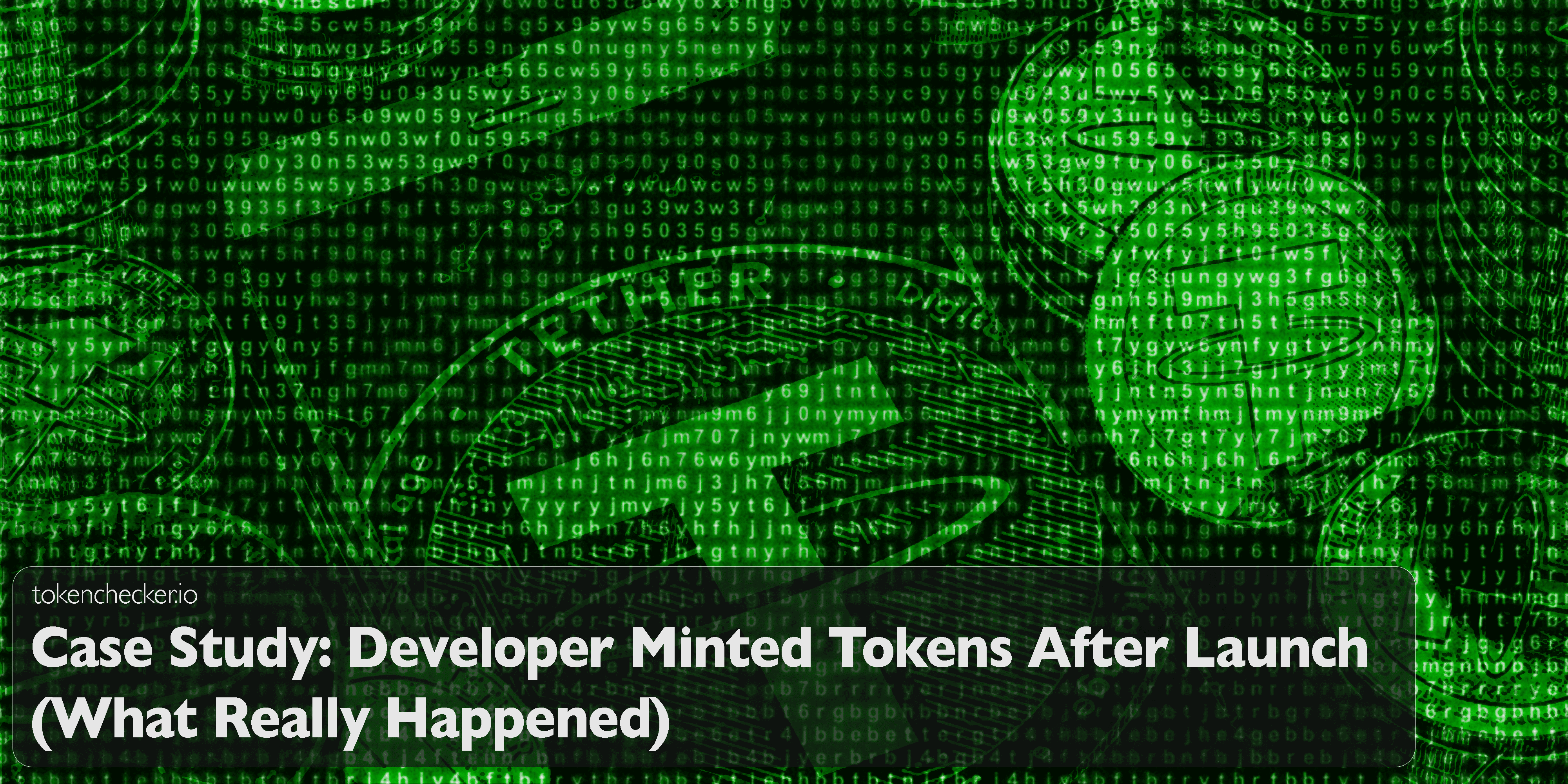
Case Study: Developer Minted Tokens After Launch (What Really Happened)
Introduction
You think the supply is fixed. You check the tokenomics. Everything looks locked in. But then out of nowhere, the devs mint millions more tokens. And just like that, your holdings are worth a fraction of what they were.
This isn’t rare. It’s happening more often than most people realize and it doesn’t always look like a hack. Sometimes it’s a governance vote. Sometimes it’s buried in smart contract code. Sometimes it’s straight-up fraud. And the result is always the same: a flood of new tokens, a tanking price, and thousands of shocked investors asking how it was even allowed.
Let’s break down how post-launch minting works, why it happens, and what you can do to catch it before it nukes your portfolio.
Why Post-Launch Minting Is So Dangerous
Unlike pre-mining (which is disclosed in the tokenomics), post-launch minting happens after the token is live and people have already invested. That changes everything.
Suddenly the rules shift mid-game. Scarcity evaporates. Trust takes a hit. And anyone holding the token is left to absorb the fallout.
This isn’t just a tokenomics issue it’s a credibility issue. And when it’s tied to insider wallets, exploitable contracts, or governance theater? That’s when things get ugly.
How Devs Pull Off Token Minting After Launch
There are a few key ways this happens. Some are obvious red flags. Others are hidden behind complexity.
- Smart Contract Exploits: Hackers find a bug in the mint function and exploit it. Think: Cover Protocol’s infinite mint attack, where 40 quintillion COVER tokens were suddenly created. That wasn’t a feature it was a fatal bug.
- Backdoors & Insider Access: Developers build hidden mint powers into the contract. It looks safe at launch until they trigger it and flood the market. Meerkat Finance is a classic case: $31 million vanished, and evidence pointed to the original deployer’s wallet.
- Governance Theater: A centralized team claims decentralization, but they control the vote. Crypto.com’s CRO re-mint? Sold to the public as a strategic reserve pushed through by a flood of last-minute validator votes, mostly controlled by the company itself.
In all of these cases, the market responded the same way: panic, sell-off, collapse.
The $LIBRA Scandal: A Political Rug in Real Time
Want to see what post-launch minting can look like with media hype and celebrity endorsements? Look at $LIBRA.
In early 2025, Argentine President Javier Milei promoted $LIBRA on social media. The devs? They held 70% of the total supply. When the price pumped, they dumped crashing it by 85% in a few hours.
Over $250 million was lost. Political scandals erupted. Criminal cases were filed. It was one of the most public examples of how insider-controlled supply becomes a weapon.
It’s Not Always Illegal But It’s Always Damaging
There’s a difference between a hard rug (malicious code, backdoors) and a soft rug (legal but unethical supply changes). Post-launch minting can fall into either camp.
The worst part? A project can claim it’s part of “strategic planning” and still destroy holder trust in the process.
And let’s be clear: whether it’s an exploit, a governance loophole, or a full-blown scam, the result is the same value dilution, trust erosion, and long-term damage.
How to Protect Yourself From Post-Mint Disasters
If you want to avoid getting wrecked, here’s what you need to check before you invest:
- Smart Contract Audits: If there’s a mint function, is it locked? Can it be called post-launch? Who controls it?
- Mint Cap: Does the contract have a hard-coded supply cap? If not, that’s a massive red flag.
- Team Wallet Transparency: If the dev wallet holds 60% of the supply post-launch, expect manipulation.
- Governance Power: Decentralization only matters if the voting isn’t dominated by insiders. Crypto.com showed how fake decentralization can flip a burn into a re-mint.
- Use tokenchecker.io: This tool scans for mint functions, backdoors, and centralization risks. You don’t need to read Solidity tokenchecker.io does the heavy lifting.
Final Thoughts
Post-launch token minting is one of the most deceptive traps in crypto. It hides behind smart contract code, governance jargon, and public-facing trust.
But once that mint button gets pressed, there’s no going back. The supply inflates. The price implodes. And investors pay the price.
If you’re investing in DeFi, you need to do more than read the whitepaper. Check the code. Review the governance. And use tools like tokenchecker.io to catch red flags before they become losses.
Because the next rug might not come from an unlocked wallet it might come from a mint you never saw coming.